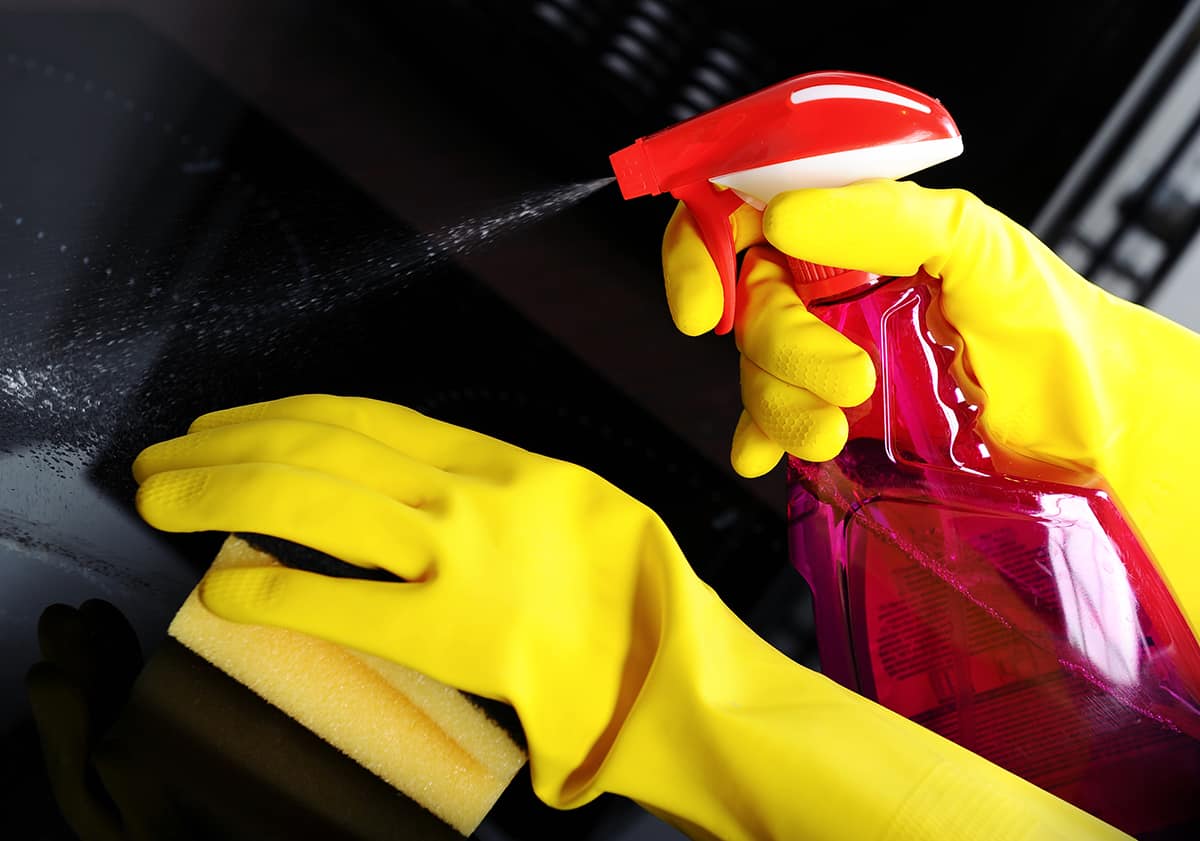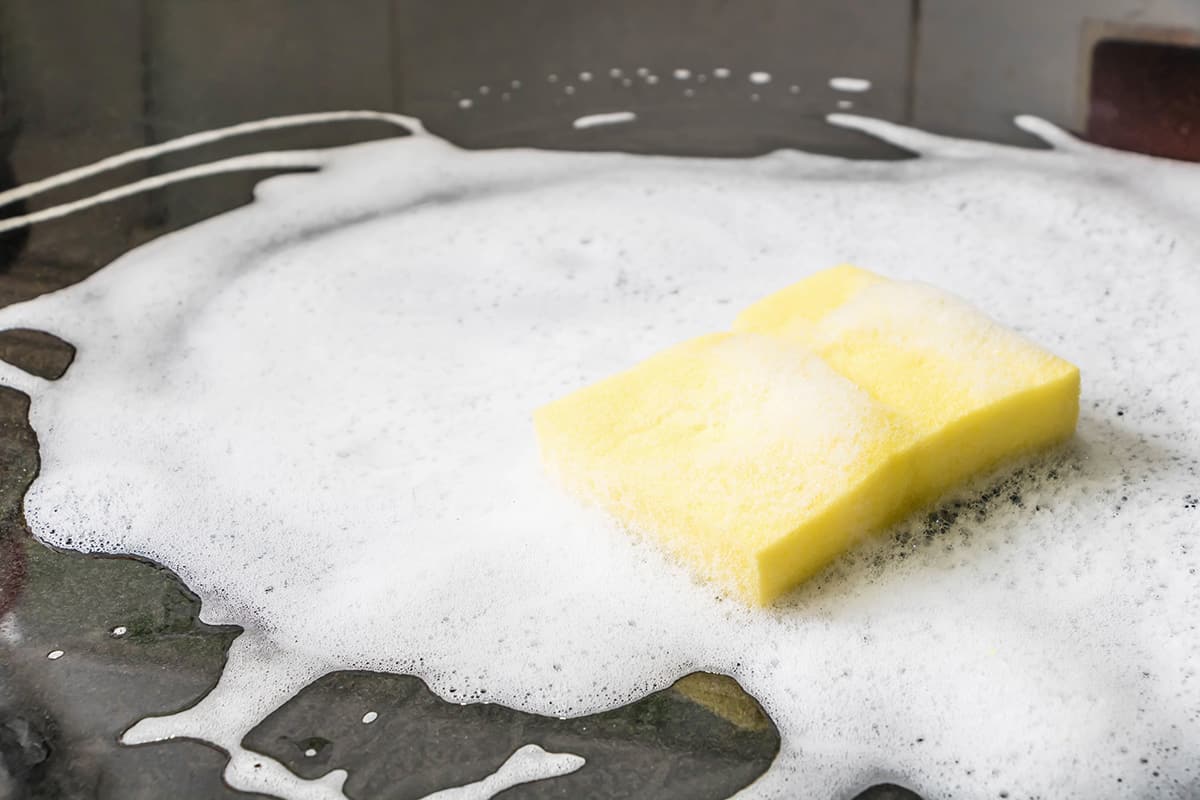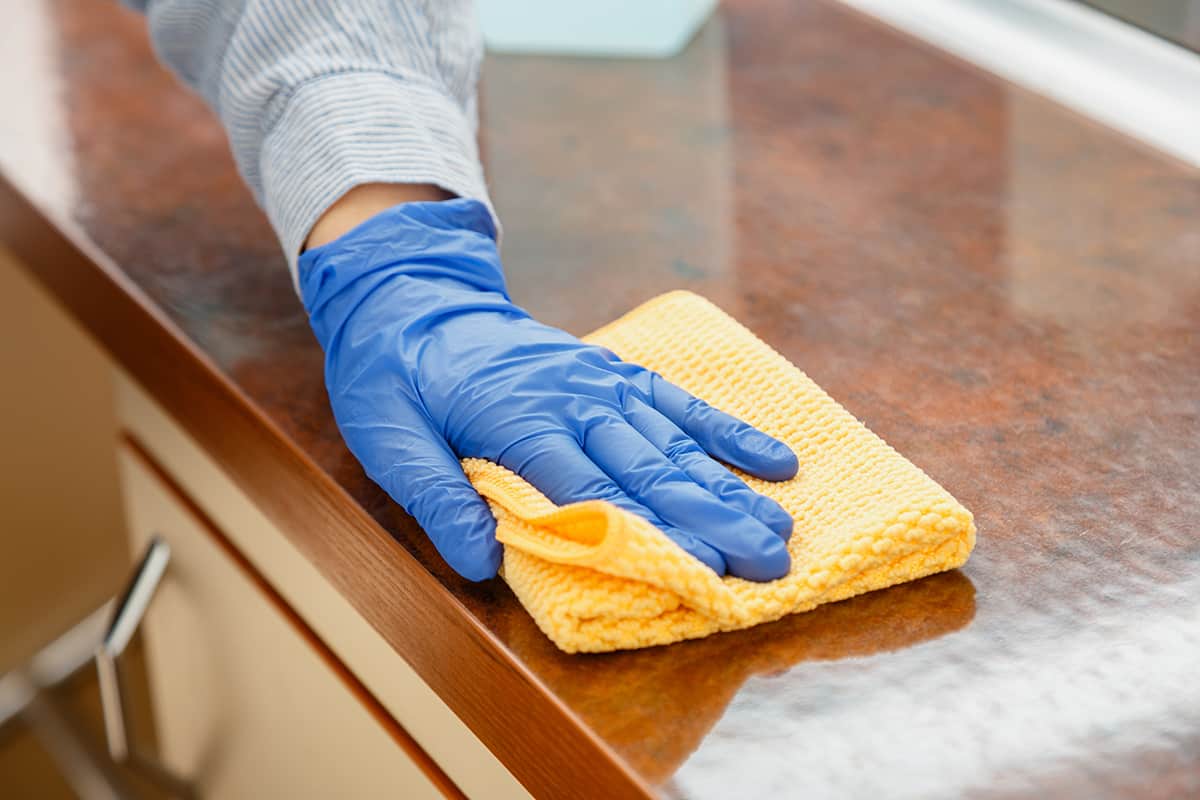Oven cleaners seem to do the job incredibly well. They loosen solid debris from oven walls, floor, and ceiling in hardly any time at all. So, does that mean you can use an oven cleaner on kitchen counters?
The chemical makeup of commercial oven cleaners is far too harsh for kitchen counters. Not only can they corrode countertops, but the chemicals can stay inside the microscopic crevices and possibly contaminate food.
In this guide, I’ll talk about what sort of chemicals you can find in commercial oven cleaners, why you shouldn’t use them on kitchen counters, and what other non-oven uses they have.
What Is an Oven Cleaner?

As its name suggests, an oven cleaner is a commercially sold cleaning agent used to remove debris and grime from ovens. When your oven’s floors, ceiling, and walls become soiled with the leftovers of hundreds of baked desserts and steaks, only an oven has the power to cut through the filth.
Oven cleaners come in all sorts of forms, with the most popular being moistened wipes, spray bottles, and spray cans. In a matter of minutes, the solid or greasy debris clinging to the inside of your oven will foam and dissolve, making them easy to wipe away with a clean towel.
It’s advised that you use an oven cleaner sparingly. Your oven will work just fine with a tiny spill or caked-on debris here and there. Only when the filth becomes too much to look at should you use a commercial oven cleaner.
What Are Oven Cleaners Made of?
While some oven cleaners may not give off a foul odor, many of them do. This is due to the chemical makeup of the oven cleaner.
In a bottle or can of oven cleaner, you’ll find chemicals like caustic soda—a common grease dissolver—and ethylene glycol, the latter of which is a common compound found in antifreeze. Needless to say, ingesting hard-to-pronounce chemicals is most likely not a very good thing to do. At the very least, ingesting these chemicals can lead to an upset stomach. Worst-case scenario, we’re looking at a trip to the ER to get your stomach pumped.
As such, you should always wipe your oven down after coating the interior with a commercial oven cleaner. That way, you significantly reduce the risk of any leftover chemicals on the surface of your baked goods.
How to Use an Oven Cleaner
Here’s how you can use an oven cleaner safely:
- Empty out the oven. That means removing all racks and trays, as well as any oven accessory (pizza stone, thermometer) that might be in there. Taking everything out gives you easier access to the oven’s interior.
- Place newspapers or towels on the ground in front of the oven door. We are going to spray the oven cleaner all over the inside of the oven, as well as the interior panel of the oven door. It’s completely safe to use oven cleaners on oven glass-panel doors.
- Spray the interior of the oven while avoiding the heating elements. If you have an electric oven, the heating element is located at the top and bottom. Gas oven heating elements are located at the bottom.
- Let the oven cleaner sit according to the manufacturer’s instructions. Oftentimes, you will have to let the cleaner sit for 30 minutes. Generally speaking, the longer you let the oven cleaner sit, the easier it will be to wipe away the dissolved grease and debris.
- Take the oven racks outdoors and spray them with the oven cleaner. It’s completely safe to spray the metal racks of your oven, provided you remove them from the oven and take them outside beforehand. Doing this will reduce the risk of the cleaner’s chemicals going airborne and landing all over your kitchen. Again, let the oven cleaner sit for around 30 minutes on the oven racks.
- Wipe the oven’s interiors and racks with a moistened cloth or sponge. The goal is to remove as much of the dissolved filth from the oven as possible while also wiping away the leftover chemicals from the oven cleaner. You might need to wipe down the oven’s interior more than twice, depending on how dirty it is. After wiping the oven’s interior, do the same for the oven racks.
- The last words of caution are you should not use the oven cleaner on a self-cleaning oven. This is because under extreme heat, when the oven is running its self-cleaning process, there are some chemicals in the oven cleaner that can turn into toxic substances.
Can You Use Oven Cleaner on Kitchen Counter?
Now, one might imagine that if an oven cleaner can work miracles and dissolve the filth inside an oven, it should do the same at cleaning non-oven surfaces. It’s true that oven cleaners are just as effective at cleaning other surfaces, such as kitchen counters, but you should NOT do it!
I already spoke briefly about the dangers of ingesting oven cleaners. Because you don’t (or at least shouldn’t) bake foods directly on your oven’s racks or floor, there is very little risk that the cleaner’s leftover chemicals will get into your food when baking. The same cannot be said for your kitchen counter.
Although you don’t cut food directly on top of your kitchen counters, the chemicals can get on cutting boards, dishware, cookware, and kitchen appliances. The chemicals can transfer to your food through contact when prepping ingredients and serving dishes.
The best method of cleaning a kitchen counter is by using a mix of dish soap and water. Scrub the counter’s surface with soapy water and wipe it away with a clean microfiber cloth. If there are solid bits of debris on the counter’s surface, you can use vinegar or baking soda paste (2:1 parts baking soda and water) to remove them.
Other Uses of Oven Cleaners

Here are a few creative ways to use an oven cleaner:
Stripping the seasoning from cast-iron pots and pans
If you somehow failed in seasoning your cast-iron cookware, you can use an oven cleaner to strip off the seasoning. I found this trick incredibly helpful when inheriting cast-iron cookware from my grandparents.
I remember telling you that you shouldn’t use commercial oven cleaners on anything you place food in or on. However, it’s safe to use oven cleaners on cast-iron cookware since subsequent washes and the re-seasoning process will pretty much eliminate the leftover chemicals.
Cleaning stove grates
It only takes one spillover for your stove grates to become caked in food material. Not only does heating dirty stove grates create soot, but it also releases foul odors into the air that can take several days to get rid of.
Removing stains from an iron plate
The brownish stain on iron plates can be the result of melted fabric residue or heated water. In either case, if you want to remove the stain, cover the plastic portion of your iron in wax paper before spraying the iron plate with an oven cleaner. Make sure the iron is completely cool before doing this!
Removing buildup from hair curlers
If you use hair iron or curler regularly, you’re probably familiar with the solid bits of debris clinging to the iron. That, unfortunately, is melted hair that has been caked onto the surface of the iron. Do away with the hair residue by spraying iron with a bit of oven cleaner.
Whitening tile grout
Apart from cleaning the inside of your oven, this should be the only time you spray an oven cleaner indoors. Spray the oven cleaner on the tile grout and let it sit for 5 to 10 minutes. Use a clean microfiber cloth to wipe the oven cleaner away. Repeat this process to get the tile grout as white and clean as you want.






